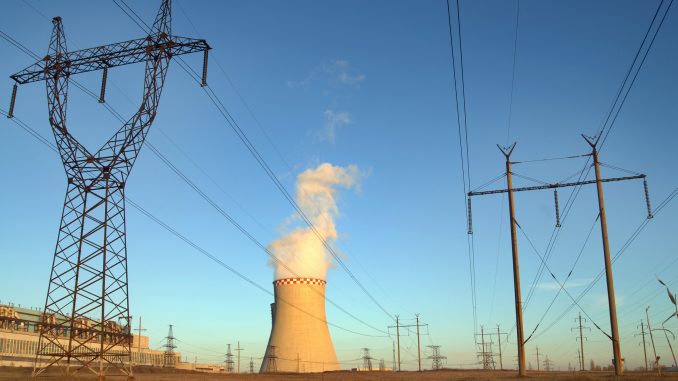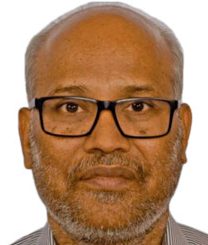
Ever since the Electricity Act, 2003 was passed, the open access in power sector has been a frequently debated topic. Section 42 of the act allows non-discriminatory open access, but in reality, its implementation is often questioned. In the past few years, many states like Gujarat, Maharashtra, Rajasthan and Andhra Pradesh allowed open access, but later backed down on the ground.
Among the biggest obstacles are the stretched finances of the discoms. They rely on industrial and commercial consumers for crucial revenue, and open access with its promise of cheaper power threatens to take away these consumers.
To escape high grid tariffs, a growing number of industrial consumers are opting for open access on the power exchanges owing to the availability of surplus power in many regions at low rates. Between March 2010 and March 2017, the number of open access consumers on the Indian Energy Exchange (IEX) increased four times to reach 4,017 consumers. Besides, open access has become more sought after with the retail supply of renewable energy becoming economically attractive. As renewable plants typically produce a small quantum of power, developers find it more convenient to directly sell power to buyers through open access. However, the increase in the cross-subsidy surcharge (CSS) and additional surcharge to unsustainable levels by discoms has resulted in the limited success of open access.
Current scenario
Currently, open access allows consumers with a load greater than 1 MW access to the transmission and distribution network to obtain electricity from suppliers other than the local discoms. It also permits generators and distribution licensees to supply electricity outside the state. However, the state governments have often imposed restrictions on power export and import by state generators and consumers, by issuing statutory orders invoking Section 11 of the act, which allows state governments to restrict open access in extraordinary circumstances. It also empowers them to direct their load despatch centres to take measures to maintain a stable transmission system.
There have been many instances where state governments have imposed restrictions on open access. In October 2015, the Karnataka government imposed a ban on open access citing monsoon failure. In March 2014, the state government had directed all generating companies to produce the maximum possible power and supply to the state grid, as the state was facing power shortages due to the breakdown of certain generating units. At the same time, Gujarat had imposed restrictions on the purchase of power from outside the state as a huge difference in the industrial tariff in the state (Rs 6 per unit) and the power price on the exchange (Rs 4 per unit) was driving industrial consumers away from the discoms.
Apart from this, the state load despatch centres (SLDCs) often reject requests from open access consumers seeking no-objection certificate (NOC) for purchasing power through power exchanges. For instance, the SLDC of West Bengal, citing transmission congestion, had rejected requests from Millennium Cement Company Private Limited and OCL India Limited seeking NOC for open access. However, the Central Electricity Regulatory Commission, while considering the matter, noted that the SLDC’s contention for denying open access is not maintainable as the Eastern Regional Load Despatch Centre had clarified that there was no constraint in the interstate transmission system for meeting the load.
Open access charges
The open access framework has been designed to compensate discoms for any additional costs incurred while providing open access. The Electricity Act, 2003 allows the discoms to impose CSS for subsidising other consumer categories; additional surcharge to make up for the fixed cost borne by the discoms for honouring the existing power purchase agreements (PPAs); and standby charges for making standby arrangements for supplying power to open access consumers in case supply from their generators stops. However, the act states that these charges must be progressively phased out. But the charges have been steadily increasing, making open access uneconomical. Notably, to promote renewable energy, some states have exempted renewables from open access charges.
Over time, more and more states are introducing additional surcharge for open access consumers. In 2015-16, Rajasthan, Himachal Pradesh, Punjab and Delhi had introduces an additional surcharge for open access consumers. During April 1, 2017 to September 30, 2017, the additional surcharge of some states stood at around Re 1 per unit. These include Haryana (additional surcharge of Re 0.99 per unit) and Punjab (additional surcharge of Rs 1.13 per unit). Meanwhile, the revision of the cross-subsidy formula in the amendment to the Tariff Policy, 2016 has led to the upward revision of the CSS in Daman & Diu, Dadra & Nagar Haveli, Gujarat, Maharashtra, Haryana, Himachal Pradesh, Chhattisgarh, Karnataka, West Bengal, etc.
Apart from this, some states impose other charges that hinder open access. For instance, the Maharashtra government has imposed electricity duty on consumers buying directly from generators. Furthermore, it has put restrictions on consumers in IT and software technology parks for the purchase of power from private generators.
It has been seen that the imposition of various charges on open access consumers reduces the competitiveness of the power procured through open access against the power supply from discoms. The sum total of open access charges and the average power purchase cost (APPC) should be equivalent to or lower than the industrial tariff. However, in many states, it is found to be higher than the industrial tariff. For example, as per an IEX presentation dated April 27, 2017, the cost of power through open access is Rs 5.99 per unit (APPC: Rs 3.29 per unit; other charges: Rs 2.70 per unit) and power is available from the discom at Rs 4.91 per unit (HT tariff: Rs 5.50 per unit; and rebates/discounts: Re 0.59 per unit).
Discoms perspective
One of key concerns of the discoms’ regarding open access is that it squeezes the revenue from industrial and commercial consumers. This would further deteriorate the financial health of the discoms that are already under financial strain. Another challenge that the discoms are facing with regard to providing open access is the frequent switching of consumers between different sources of power supply. Often, open access consumers switch between opting for power supply from the discoms and other market sources via open access. In recent times, with plummeting power prices on the exchanges, this trend has become more prominent. Volatility in power demand adversely affects power procurement planning of the discoms. Moreover, it leads to stranded generation capacity as the discoms do not purchase the committed capacity if consumers switch to other sources of supply.
MoP’s consultation paper on open access
In order to look into the challenges associated with the adoption and promotion of open access in the country, the Ministry of Power (MoP) directed the Central Electricity Authority to constitute a committee to examine the open access scenario in the country. The key suggestions were put forth by the committee in a consultation paper, which was released recently. These included scheduling of power by open access customers for at least 24 hours, the determination of CSS by the state electricity regulatory commissions based on the category-wise cost of supply, and the introduction of CSS for peak, off-peak and normal periods. Further, according to the MoP, a uniform methodology should be adopted for the determination of additional surcharge based on three components – stranded power under long-terms PPAs, stranded physical assets, and the cost of carrying regulatory assets or the amortisation of regulatory assets. It also suggests the determination of standby charges, comprising the fixed and variable charge components, and the gradual rationalisation of tariff.
However, industry experts opine that the consultation paper has failed to adequately address the concerns of open access consumers. CUTS Institute for Regulation and Competition stated, “It seems that these observations made in the paper are skewed more towards the issues of discoms, rather than the issues faced by the open access consumers, thus proposing more stringent scheduling restrictions for open access consumers. Therefore, it is recommended that the process should be made less complex, viable, uniform and more inclusive as per international standards.”
According to Bridge to India, “The paper contends that the CSS and additional surcharge are not being calculated correctly leading to the under-recovery of expenses by discoms. It recommends more stringent scheduling restrictions for open access customers and makes suggestions for the computation of CSS, additional surcharge and standby charges. We believe that these recommendations will further increase complexity as well as the cost of open access based power.”
To conclude, the liberalisation of the power sector and allowing open access is vital for healthy competition in the distribution segment. At the same time, it is critical to ensure that the steps taken to promote open access adequately address the concerns of the discoms and open access consumers alike.




